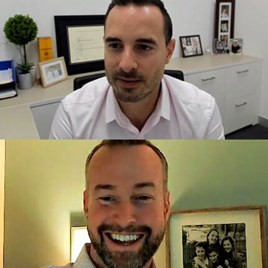Jan 03 2023 / Round the Table Magazine
Q&A: Kaseenee Phetsaenngam
Topics Covered
How do you categorize your clients?
Clients are sorted into one of three categories. The first group is children to 21-year-olds, where the emphasis is on covering medical expenses and education plans. Next, the working category is divided between 22- to 45-year-olds, where medical expenses is a concern, and 46- to 59-year-olds, who I try to get to focus in on pre-retirement wealth accumulation. Finally, there is the retirement cohort that are 60 and older, and I address health care, wealth transfer and will preparation.
How would you handle planning for 22- to 45-year-old clients in the working category?
I would present three strategies with one addressing medical expense coverage through a unit-linked policy that gives clients both insurance and investment in a single plan. So, if there is a financial problem that forces the policy holder to stop paying premiums, there still is medical coverage as long as the investments in the policy have value. Unit-linked insurance plans are tremendously popular with working-age clients who have not yet started a family. They are comfortable knowing they have long-term health care and a backup plan for liquidity because they can withdraw cash from the plan by selling investment units.
What are your other strategies for this working group?
I emphasize retirement and tax planning and explain to my clients how long-term planning is done through endowment insurance and pension insurance. If they understand the benefits of long-term planning, they can reach all their life goals easier and faster. Along the way, we will be reviewing our life plans once or twice a year.
I also recommend insurance protection to ensure the standard of living continues for loved ones, such as parents and children, in case the head of the family dies. We calculate an appropriate sum assured using the needs approach, where we consider the needs of the family to pay off existing debts, and income needs based on the earning capability of the family head while he or she was alive up to the date of retirement. I also would look at specific objectives like having an educational fund for children. Consequently, I would recommend the client in this working-age group with a minimum monthly salary of 100,000 Thai baht to consider an initial sum assured of 10,000,000 THB.



![Beyond finance: Individuals outside the financial profession every financial advisor should learn from [Nirmal Debnath]](https://www.mdrt.org/globalassets/digizuite/32634-en-india_written-interview_nirmal-debnath-thumbnail.jpeg?height=268&crop=0,0,268,268)
![How to tailor financial advice to fit the unique needs and goals of your clients [Merryl Baptista]](https://www.mdrt.org/globalassets/digizuite/32635-en-india_written-interview_merryl-baptista-thumbnail.jpeg?height=268&crop=0,0,268,268)
![Anticipating the financial needs of Gen Z clients and advising prospects towards adequate insurance cover [Komal Atal]](https://www.mdrt.org/globalassets/digizuite/32632-en-india_written-interview_komal-attal-thumbnail.jpeg?height=268&crop=0,0,268,268)
![Enhancing your offline persona through cultivating an online presence: Tips and strategies [Khushboo Bajaja More]](https://www.mdrt.org/globalassets/digizuite/32630-en-india_written-interview_khushboo-bajaj-more-thumbnail.jpeg?height=268&crop=0,0,268,268)
![A former flight attendant's sky-high client servicing standards [Beth Daffodil Uy Tan]](https://www.mdrt.org/globalassets/digizuite/32577-en-ph-_video-interview_a-former-flight-attendant's-sky-high-client-servicing-standards_daffodil-tan-thumbnail.png?height=268&crop=0,0,268,268)



![Overcoming a financial advisor’s internal self-doubts [Cedrick Cruz]](https://www.mdrt.org/globalassets/digizuite/32509-en-ph_written-interview_-handling-a-financial-advisors-self-doubts-cedrick-cruz-thumbnail.jpg?height=268&crop=0,0,268,268)
![Why negative feedback is not a setback [Ella Grace Nuguid]](https://www.mdrt.org/globalassets/digizuite/32508-en-ph_written-interview_-turning-negative-feedback-into-opportunities-and-motivation_-ella-nuguid-thumbnail.jpg?height=268&crop=0,0,268,268)

![Financial advisor on-call: Strategies for engaging doctors [Mardeo Vellon]](https://www.mdrt.org/globalassets/digizuite/32490-en-ph_written-interview_-financial-advisor-on-call_strategies-for-engaging-doctors-_-mardeo-vellon-thumbnail.png?height=268&crop=0,0,268,268)